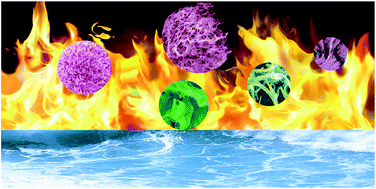Nanomaterials via solution combustion synthesis: a step nearer to controllability
Abstract
Solution combustion synthesis (SCS) is a worldwide adopted technique to synthesize nanomaterials, especially for oxides, because of its simplicity, energy and time-effectiveness, and low cost. The general difficulty encountered in SCS is the controllability over phases and morphologies of the products, which arises from the inherent rapid and uncontrollable combustion procedure. In this regard, the present work is devoted to review the recent progress on phase- and morphology-controlled SCS in detail. Besides the various metal oxides, SCS is now applicable to fabricate nanomaterials of metal phosphates, metal silicates, metal borates, metal sulfides, metals, and even alloys, through careful selection of solution compositions. Oxides with regular morphologies of flowers, belts, triangles, tubes, wires, and rods can be synthesized by SCS, in the presence of certain templates, or through a self-assembly procedure. The recent progress made on the synthesis of porous materials via SCS is summarized. SCS is also capable of growing metal oxide thin films at low temperatures, enabling the fabrication of low-cost and high-performance electronics on flexible plastic substrates.

- This article is part of the themed collection: Synthesis of nanomaterials

 Please wait while we load your content...
Please wait while we load your content...